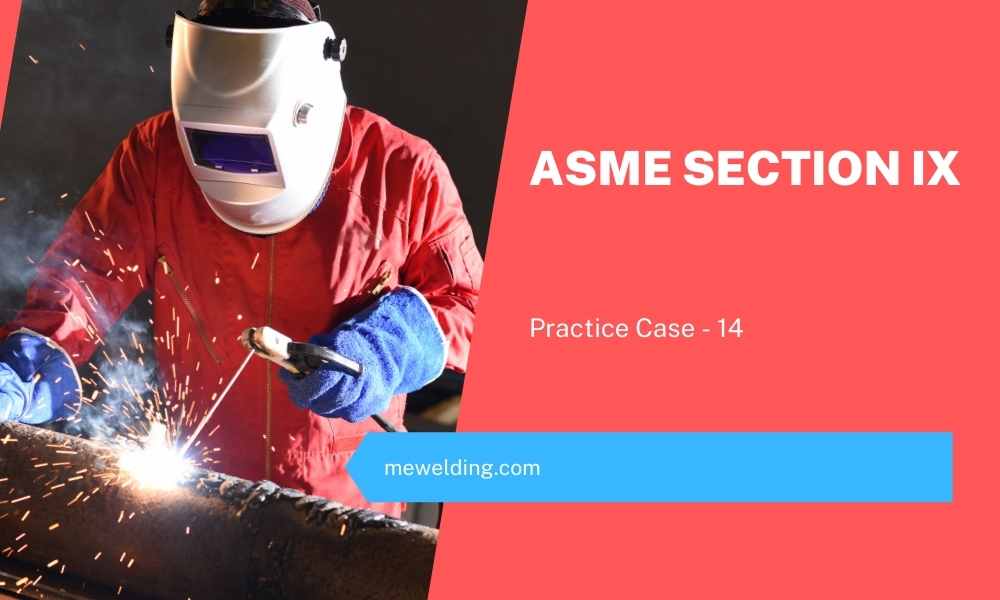This article discusses a question which has become pertinent only after the 2021 edition of Section IX. The 2021 edition of Section IX exempts P-No. 8, P-Nos. 21-26, and P-Nos. 41-49 from several of the supplementary essential variables. In fact, this exemption is now applicable to all of the supplementary essential variables.
However, what happens when one of the base metals is one of these exempted base metals while the other base metal is not covered by the exemption.
Read this article to find out.

Consider the following questions asked in Interpretation IX-21-11.
“Background: GTAW PQR shows acceptable qualification test results, including toughness test, with 1 inch thick P-No. 1 plate groove welded to 1 inch thick P-no. 8 plate. QW-403.6(c) explicitly exempts P-no. 8 base metals from applicability of QW 403.6. QW 403.6(c) does not mention welding of the exempted base metals to non-exempted base metals.
Question 1: When toughness testing is required, does the PQR in the background support WPS for groove welding of ½ inch thick P-no. 1 to ½ inch thick P-no. 8 base metal?
Question 2: When toughness testing is required, does the PQR in the background support WPS for groove welding P-no. 1 base metal from 5/8 inch through 2 inches thick to P-no. 8 base metal of thickness ranging from 3/16 inch through 2 inches?”
QW 403.6, a supplementary essential variable which becomes applicable when toughness is a consideration, limits the minimum base metal thickness qualified. For the test coupon thickness 1 in. in question, the minimum base metal thickness qualified is 16 mm (as against 5 mm permitted by QW 451 if toughness wasn’t a consideration).
P-No. 8 materials are exempted from this limitation, this exemption has been provided in point (c) under QW 403.6. [This exemption has made its appearance only in the 2019 or 2021 edition]. However, as rightly pointed out by the inquirer, QW 403.6 says nothing about the cases when test coupon has been prepared with an exempted material welded to a non-exempted material.
In fact, this question may be asked not just for QW 403.6, but also for QW 406.3 (Increase of more than 55°C in inter pass temperature), QW 407.2 (time and temperature range in PWHT), QW 409.1 (increase in heat input), QW 409.4 (change in type of current or polarity), QW 410.9 (multiple pass to single pass/side), all of which are supplementary essential variables, and all of which provide exemption for P-Number 8 (and a few other P-Numbers as well).
How are these variables to be reckoned when the procedure qualification test coupon has been made with P-Number 8 material welded to a, say P-Number 3 material (which has toughness testing specified by the referencing Code, say).
This has not been addressed anywhere in Section IX. One can only try to extract ASME’s intent in regard to such situations by perusing Interpretations, such as this one.
The best way to approach such questions is to apply all supplementary essential variables on the part which is not exempted, and not apply them on the part which is exempted. Treat them individually. [When this is not possible, choose the more stringent requirement among the two available alternatives.]
For example, in the question 1 above, QW 403.6 needs to be applied to the P Number 1 part, and the P Number 8 part needs to be ignored. (For some of the supplementary essential variables, it must be known whether toughness test has been specified for weld metal or not.)
The qualified thickness for the P Number 1 part therefore, after considering QW 403.6, is 5/8 in. to 2 inches. For the P Number 8 part, QW 403.6 is not to be applied. So the qualified thickness is 3/16 in. to 2 inches.
The thickness of P Number 1 part in question 1 falls outside the qualified range. Hence, the PQR described in background cannot support the WPS described in question 1. The answer given by the ASME to question 1 is therefore ‘No’.
The thickness range in question 2 is exactly the range qualified for the PQR, as explained in above paragraph. The PQR can thus support the WPS in question 2. The answer given by ASME to question 2 is ‘yes’.
So this was something about the exemption given to some of the base metals from the restrictions imposed by supplementary essential variables. Would you like to add something? Please feel free to share your thoughts in the comments section below.
See More:
Commonly Asked Questions On WPS With Toughness Requirement
